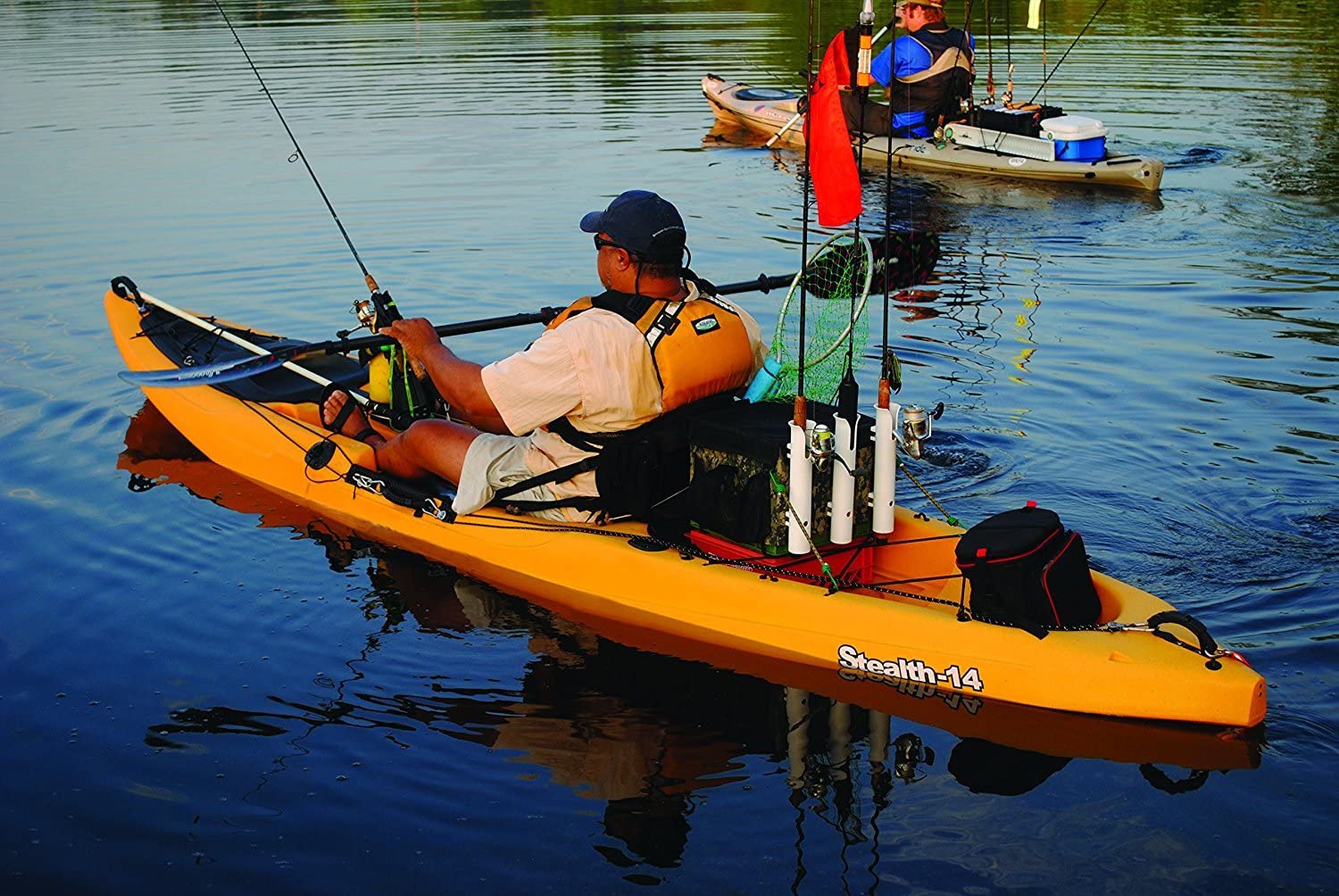Most people who fish from a kayak are anglers NOT kayakers
Listen to the experts. nDo a FREE Fishing Kayak Control Course with Sea Kayak Hong Kong.
Learn how to control your kayak and understand how the local tides, currents and weather effect the fishing conditions.
Understanding how a kayak works is very important.
Fishing is an art form that completely eludes me. On the other hand, kayaking is about science and maths, which makes total sense. So, if being a better kayaker means that you will be a better kayak angler, then lets start with the basics.u00a0
Understanding how the kayak works 101.
A sit-on-top kayak is the perfet type of kayak to use for kayak fishing. These kayaks are completely different to seakayaks which are designed to go on extended journeys across the open ocean. See the features comparison table later in this post.u00a0
The sit-on-top kayak is extremely stable due to its width. This means that it will be slow paddling so do not try and do long distances in these kayaks. The maximum speed you will be able to go on still water is about 3 kms per hour – a slow walking speed.u00a0
Using tides and tidal currents.u00a0
Because the sit-on-top kayak is relatively slow, you will need to know which direction the tidal current is flowing and how fast. The maths is really simple. If you are sitting in a body of water travelling south at 3 kms per hour for 2 hours, you will travel 6kms south. If you have to return home after drifting with the tide, it will take you 2 hours of constant paddling to get back to where you started. Simple uh? Well its a bit more complex than that, but the principle is correct.u00a0
Knowing how the tides effect water flow and how fast and in which direction they are flowing takes local knowledge and some real calculations. This is essential knowledge for your safety and enjoyment. Did I mention safety?u00a0
In Hong Kong there are some very strong tidal currents that can easily flow at up to 10kms per hour. Tat will have a dramatic effect on how you can control your kayak.
Understanding tides and tidal currents is essential seamanship for a kayak angler..u00a0
Understanding how wind and weather can effect a kayak on the water 101.
The sea is made of water. Water is a slippery liquid. The wind will blow the kayak across the slippery surface – simple logic. So, knowing which way the wind is blowing from and how fast is essential for you to know where to paddle your kayak, if you don’t want to be blown away.
Understanding how local topography effects wind direction and speed is also important knowledge for a kayak fisherman or woman.
So it should now be fairly obvious that during your time on the kayak on the wateru00a0there will be things that effect it.u00a0Unless you want to be drifting along at the mercy of the wind and tidal currents,
you will need to know how to anchor the kayak to stop the drift AND paddle the kayak effectively to get to and from where you want to go!
To gain this knowledge requires 2 seperate parts to learn the essential seamanship skills for a kayak anler.
The first part is to understand the theory. This can be done online mostly. Sea Kayak Hong Kong will be developing an online kayak seamanship course in the near future that will allow you to learn these fundamentals in your own time.
The other part is to put the theoretical information into practice AS WELL AS learn the fundamentals of effectively paddling and controlling your sit-on-top kayak.


